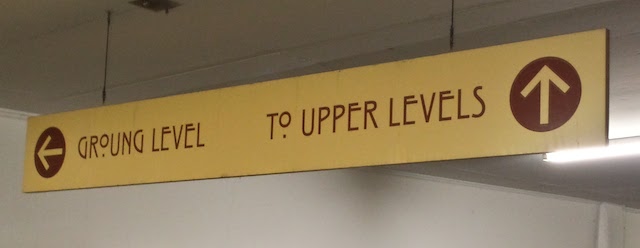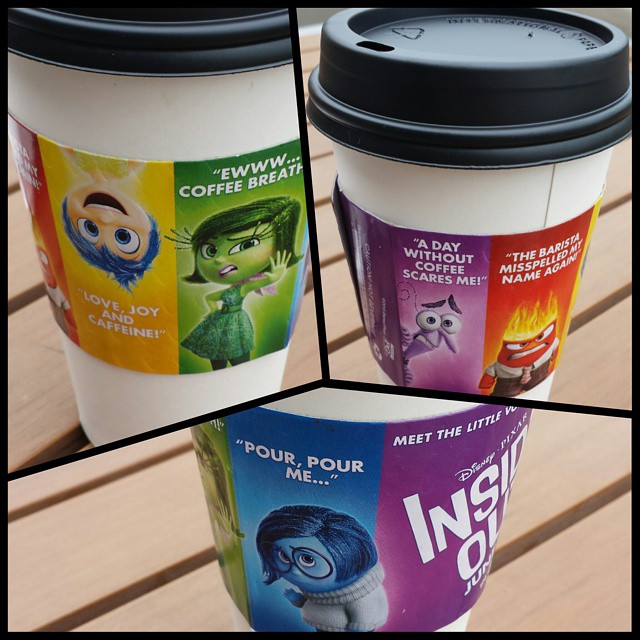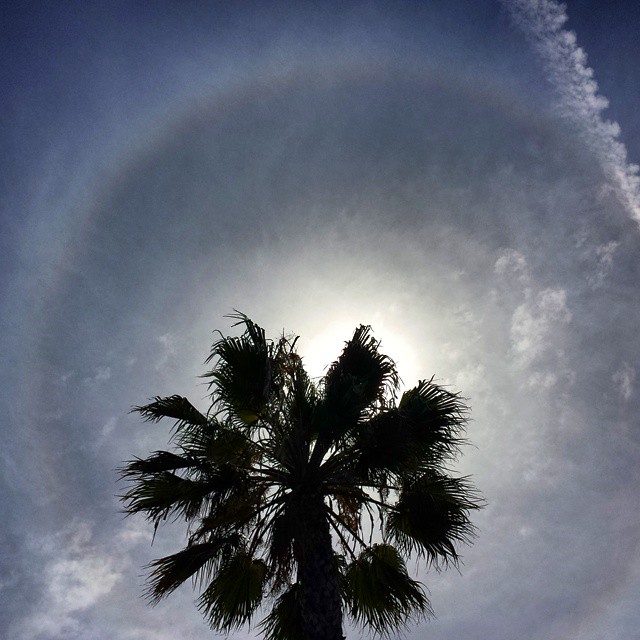Overheard at the park:
I’m 13, Grandma, I can’t be on this playground.
Why?
It says 5-12.
Overheard at the park:
I’m 13, Grandma, I can’t be on this playground.
Why?
It says 5-12.

Sign in a parking structure. I suspect the font choice made it easier to miss the error.
In the last few weeks I’ve visited two “wilderness” parks in the South Bay area near Los Angeles. Both are islands of nature surrounded by suburbs, but they have opposite goals.
Madrona Marsh Preserve in Torrance is first and foremost a preserve. It’s the last remnant of the seasonal marshes that once covered the western part of the LA basin. It’s carefully maintained, but the goal is to assist the natural environment. Ponds form naturally during the winter and spring rains and dry out over summer. All kinds of waterfowl visit the pools during the wet season. The visitor center is outside the preserve, across the street, and the gates shut at 5 pm. Facilities inside the preserve consist of a storage shed, dirt trails, and an awning to shade plants that are being prepared for one section or another of the ecosystem. I took a zillion photos and narrowed it down to an of album of 25. Here are a few shots to show the range of habitats.
Hopkins Wilderness Park in Redondo Beach is much more focused on giving people the experience of nature. It looks and feels like some of the regional parks I’ve hiked, hilly with trees and chaparral, but an artificial stream runs into a concrete-lined pond near the entrance, stocked with koi and turtles and floating water plants. Food is available for feeding the fish and ducks. (Or maybe the teacher brought it – we were there with my son’s preschool class.) Some of the trails are paved with gravel. Overnight campsites with picnic tables and restrooms dot the park, and a large concrete amphitheater sits against one hill. Full album on Flickr, some selections here:
Both parks are nice to just get away from the city for an hour or two and relax. Neither is big enough to get lost in (or to be too far from the restrooms).
If you have a big group of kids, Hopkins is the way to go. It’s shadier, has picnic facilities, and when it comes down to it, the park is made for us. Pack your trash out, but feel free to sit on the logs, feed the fish, whatever. I’d only really recommend it to locals, though – there isn’t much to set it apart from other parks.
Madrona felt more like I was an observer: accepted, but apart. There’s more wild in it, which makes it more fascinating. Plus it’s so different from the hill/canyon sparsely-wooded parks I’m used to. I’d love to go back and see how different it is in summer [Update: I did], or after the ponds dry up for the year, or in a wetter spring.

Normally I don’t like these glossy coffee sleeves because they don’t insulate very well (plus the ads tend to be irrelevant to me), but I like the thought put into this one for Inside Out.
I’ve been kicking myself for not checking out the neighboring building’s stormwater pool during the last spring rainstorm of April, figuring I wouldn’t get another chance to see it in the rain until winter. But over the last few weeks, two storms have blown into town from up north. One hit overnight, leaving behind only wet ground the next morning…and one hit in the middle of the day, making it easy to run next door.
That actually doesn’t look half bad! Though the barrel embedded in the middle still looks kind of ugly.
I took one other shot where you can see water pouring out of one of the drainpipes.
As for the rest of the office-to-hotel conversion:

The Nexus 7 Android tablet has been discontinued in favor of the Nexus 9. (via Slashdot.) I’ve had a Nexus 7 (2012) almost since the beginning, and while it’s showing its age, I’ve been trying to stretch out its lifetime, because I actually do still use it on a regular basis.
Most of what I do these days with it is reading. Email. Books. Comics. Feedly. Pocket. Some photo management and searching. My four-year-old plays games, most of which run fine once they’re up but they take forever to load. I’ve also started introducing him to photo editing apps like Pixlr and Aviary. I used to do more typing and web browsing on it, but it’s just gotten so slow that it’s actually faster to pull out my phone or go over to a computer. Katie doesn’t use it much at all because she has a Note, which is almost into tablet territory already. (She’s not alone. Since the iPhone 6S came out, Pocket has noticed that people with both tablets and phones use their tablets a lot less often if their phones are larger.)
But the 7″ tablet form factor is perfect to keep with you at the breakfast or lunch table, or kick back on the couch.
The thing to remember about the Nexus 7 is that the original release was a proof of concept. There were android tablets before, but the market was still considered something of a joke compared to the iPad, and Google wanted to prove that (a) there was a market for a good Android tablet, and (b) there was a market for a tablet larger than a phone and smaller than an iPad. The iPad Mini didn’t exist at the time, and Apple was still ridiculing the concept.
It succeeded. But they made some mistakes with the hardware that were corrected in the 2013 model. Unfortunately those mistakes have made the first edition notorious for slowing down.
Mine was getting close to unusable around the time Lollipop was released, and upgrading finished the job. Fortunately wiping it and doing a fresh install cleared up a lot of the problems, though as I’ve added more apps, it’s continued to slow down. Chrome is too slow to use, and while Firefox is a little faster, I basically can’t surf the web on the tablet anymore.
But for a core set of apps, it’s still useful. I’ll read/reply to email and skim Feedly in the morning at breakfast, saving items to Pocket to read later. Then at lunch I may read a book or catch up on those saved articles. Since Gmail and Pocket both work offline and sync in the background, I can still use them in places without WiFi. Mobile data would be nice, but offline+sync makes it less critical, and I’ve saved a few hundred over the last three years by not having an extra data plan.
I am going to have to replace it soon, but I can’t decide what with. I don’t want the larger size that the Nexus line is moving toward, and while I’ve been looking at Samsung’s Galaxy tablets, the models I’ve tried all feel a little too small or a bit too big. I don’t want a 10″ tablet, and I don’t want a giant phone. I want a device that’s just big enough to read a full comic book page on it, but still small enough that it feels like a paperback book.
Note: I didn’t actually post this when I wrote it. I’ve backdated it to the original date because it’s no longer timely, but I wanted it online so I could link to it.

There was enough glare that I couldn’t see anything on the screen to frame the shot, but it worked out just fine.